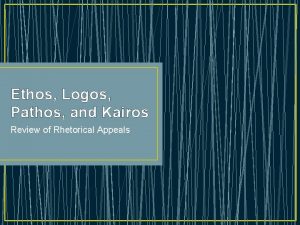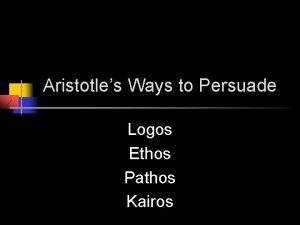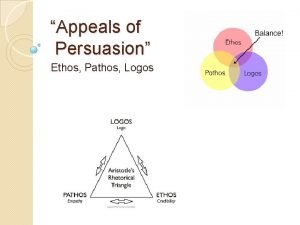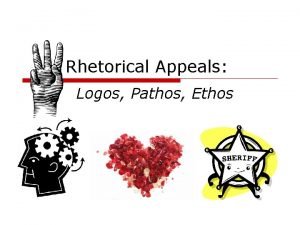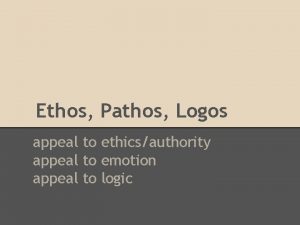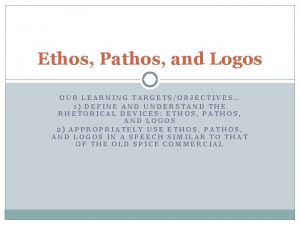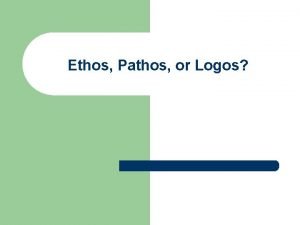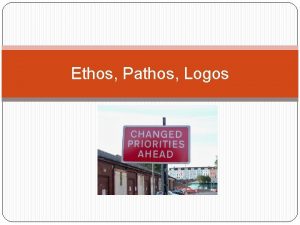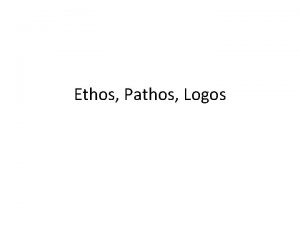Pathos Logos and Ethos Logos the appeal to







- Slides: 7

* Pathos, Logos, and Ethos

*Logos: the appeal to logic, means to convince an audience by use of logic or reason. *Effect on audience: logos evokes a cognitive, rational response. Readers get a sense of, “Oh, that makes sense” or “Hmm, that really doesn’t prove anything. ” *

*Theories / scientific facts *Indicated meanings or reasons (because…) *Literal or historical analogies *Definitions *Factual data & statistics *Quotations *Citations from experts & authorities *Informed opinions *Examples (real life examples) *Personal anecdotes *

*Ethos: the ethical appeal, means to convince an audience of the author’s credibility or character. *Effect on audience: Helps reader to see the author as reliable, trustworthy, competent, and credible. The reader might respect the author or his/her views. *

*Author’s profession / background *Author’s publication *Appearing sincere, fair minded, knowledgeable *Conceding to opposition where appropriate *Morally / ethically likeable *Appropriate language for audience and subject *Appropriate vocabulary *Correct grammar *Professional format *

*Pathos: the emotional appeal, means to persuade an audience by appealing to their emotions. *Effect on Audience: Evokes an emotional response. Persuasion by emotion (usually evoking fear, sympathy, empathy, anger) *

*Emotionally loaded language *Vivid descriptions *Emotional examples *Anecdotes, testimonies, or narratives about emotional experiences or events *Figurative language *Emotional tone (humor, sarcasm, disappointment, excitement, etc. ) *

